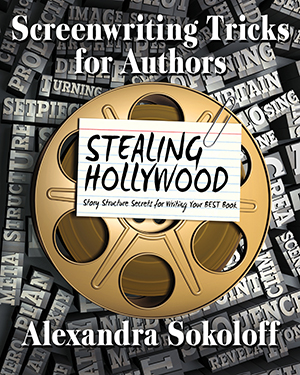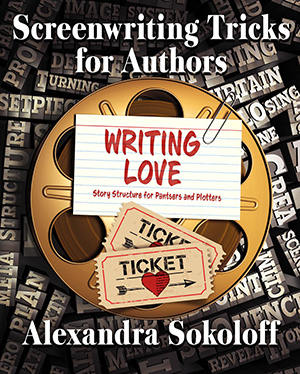After last week’s post I got a request for a discussion of how to create love triangles/ secondary love interests — and I’m happy to do a post on this excellent question! One of the key elements that makes a love triangle work is:
The two possible love interests clearly represent two different sides of the protagonist, and two very different possible life choices that are both enticing to the protagonist.
One of the books/series I talk about in that last post, Daisy Jones & The Six, is a really good recent example of a strong love triangle (better in the show than in the book!).
The male protagonist, Billy, is torn between two women, Daisy and Camila, who are well-developed and contrasting characters – especially because actor Camila Morrone inhabits the role of Camila with such power and soul. These women are not just dynamic, intelligent, talented, attractive characters in their own right – they also very clearly represent two opposite lifestyles that are equally enticing,so Billy is being pulled apart by an almost impossible choice.
The two choices also bring the themes of the story to life—
presenting contrasts between sobriety and addiction; hedonism and responsibility; living for your family vs. living for your art; taking risks for your dream vs. settling for convention, and more.
And –
These themes are strengthened because the supporting characters play out these themes in their relationships as well.
Personally, I feel that –
The most interesting love triangles present two equally valid choices.
Although I get as much guilty pleasure as anyone over vicariously living a fling with an obviously unsuitable bad boy!

I’d like to point out that
YA romantic triangles are often far better developed than adult romance triangles!
For some reason YA books and series are much better at presenting two strong competing love options, which is why you see the YA phenomenon of “Team Gale” vs. “Team Peeta” (THE HUNGER GAMES) or “Team Edward vs. Team Jacob” (TWILIGHT – not what I’dcall a healthy choice but wildly popular), which can attract legions of passionate fans on both teams.

Of course young adults should be exploring different life and love options and making mistakes so that ultimately they can choose wisely, from experience! But shouldn’t we adults be doing the same thing? Even, like, exponentially so? Why should we let teenagers have all the fun?
HOWEVER – some people seem fine with books and films that havea secondary love interest who is obviously completely wrong for the protagonist. I can’t stand that kind of story myself – but that doesn’t mean it’s not a valid story! And it’s possible to do it well, as in SLEEPLESS IN SEATTLE.
And that’s the bottom line, here:
You need to do what is most interesting to you.
So as always, the first thing I recommend doing is:
Make a Master List: 10 movies, books & TV shows that have love triangles or love plots you especially respond to.
And again, I always recommend including several movies because they are so much faster and easier to study! As you’ve probably noticed, I tend to use extremely well-known movies as examples so my points are accessible to the widest number of people possible, and to save you all a shedload of research time.
Just making that list for yourself will give you a much better idea of what kind of story and characters work for you. Then when you start to compare the dynamics of each of the films/books/series on your list to the dynamic you’re working with in your own story, it will help you define and detail your own love triangle or love dynamic.
Let’s look at some
Common Love Triangle Patterns:
- And btw – I’m mostly making up my own names for these patterns I see! I encourage you to do the same, and add your lists to your MASTER LISTS NOTEBOOKso you can keep expanding your lists and you always know where to find them. (Read more about this personalized story notebook in Stealing Hollywood and Writing Love).




